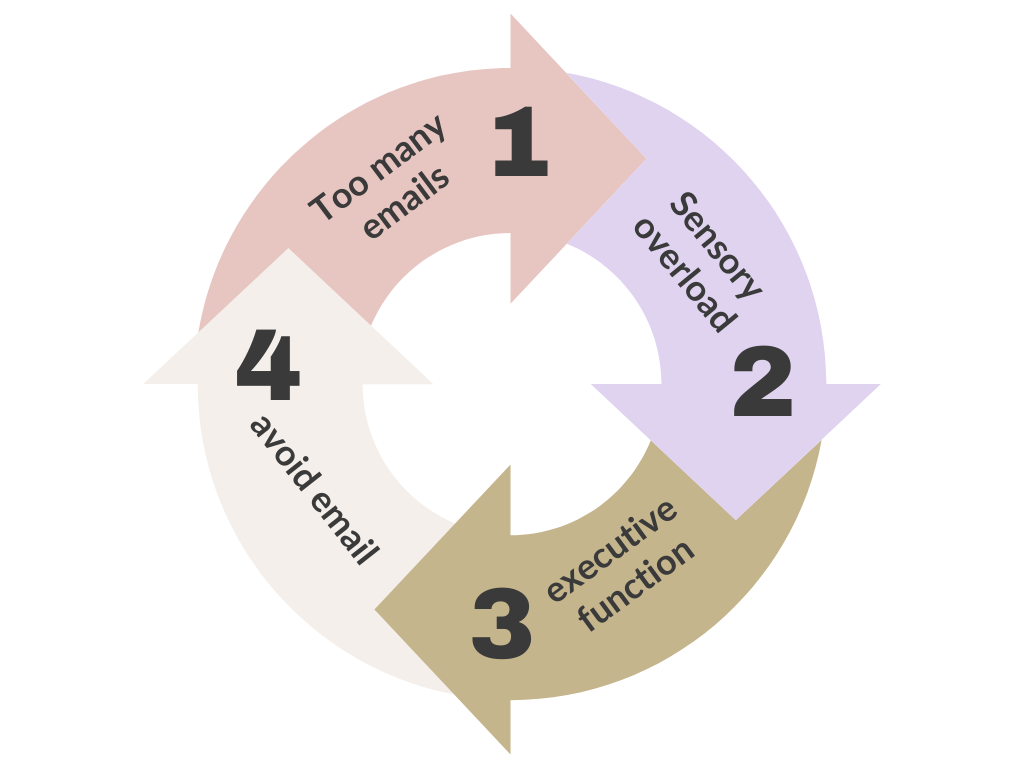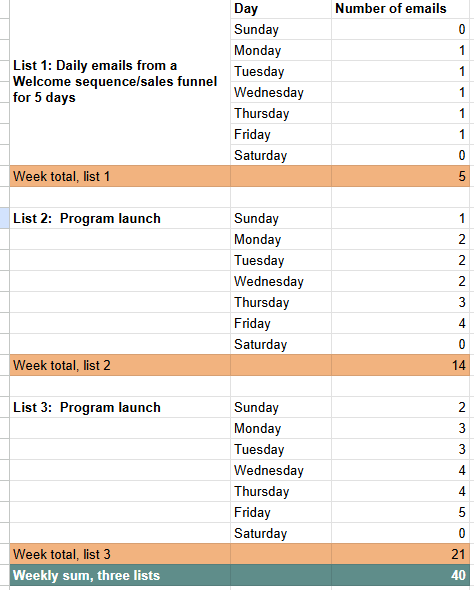This will change how you see (email) marketing forever
What email marketing experts miss about ADHD brains
Marketing is one of the lenses through which I see the world. I ask questions such as,
How are ADHD brains wired to receive marketing?
Do we need to be marketed to differently?
Why do popular marketing practices have an opposite effect on me?
Last March, I answered these questions in my LinkedIn newsletter. Titled "How ADHD Brains Are Reshaping Marketing in the Attention Economy," The article offered advice to content creators and discussed marketing to individuals with ADHD from a social media perspective: Our attention spans have shortened and marketing is shifting to match this fast-paced reality with quick hooks, rapid content shifts, and dopamine-driven engagement.
I recently reshared this piece. In the post that originally introduced it, I asked, “But if marketing now mirrors how ADHD brains work... what does that mean for marketers and consumers?”
There’s another type of marketing that ADHD brains experience differently:
Email marketing.
The conventional approach to email marketing
Email marketing experts teach about email cadence, strategic timing, frequency, and the sequence of emails sent to an audience for marketing or sales purposes. For general mailing list emails, experts recommend sending anywhere between once a month and three times a week to achieve high open and click rates, low unsubscribe rates, and staying memorable while avoiding inbox overwhelm.
Sounds good to me.
For promotional periods with a clear deadline (e.g., webinars, program registration deadlines, sale days), marketing experts recommend sending multiple emails daily during launches to stay visible, ramping up in the days leading up to the final day and on the day itself.
Marketers (anyone promoting themselves) believe that high email frequency is the key to being seen in a crowded inbox. It’s the common email marketing practice.
The problem is, they’re not thinking about individuals with ADHD, or they’re making the wrong assumptions. Those people offering solutions are also contributing to problems that can cost them.
What annoys neurotypical individuals hits individuals with ADHD differently, in ways that are likely unexpected.
Consent isn’t only theoretical, nor is it only a compliance requirement
We opt in, but we don’t agree to a barrage in our inbox.
There is a reasonable expectation that you’ll respect our inboxes.
This applies to every email subscriber, regardless of neurotype. However, individuals with ADHD have additional sensitivities about it. The barrage feels harder and hits areas that are unique to us.
People with ADHD might be more prone to messy inboxes in the first place, but there’s an agonizing cycle that can happen:
We might avoid our inbox to stop the discomfort, but ignoring the problem (an inbox with an overwhelming number of emails) makes it worse, as MORE emails take up space.
We may bulk delete anything from a mailing list without reading (I do that). We may UNSUBSCRIBE.
At the same time, we might experience FOMO. Perhaps we find out we missed out on an offer we would have liked because a) it was buried beneath someone else's promotional emails, or b) we deleted it without reading to try to resolve the problem.
Congratulations, your attempt at being seen in my inbox lost you that visibility and (maybe) a sale.
Like drinking from a fire hose
I decided to write about “ADHD and Email Marketing” while feeling like my inbox was under attack by a business coach promoting a program.
She sent me so many emails that I wanted to cry, because the number of unread emails in my inbox was so high, and she contributed to that. It was the embodiment of the metaphor of trying to drink from a fire hose. The water keeps rushing out, and you can’t turn it off. I felt she was taking advantage of my consent.
Her most recent promotional period ended on October 14. When I checked my inbox on October 8, I found that she had sent 87 emails to her list since August 12. Unless I’ve deleted some, here is the count by month:
49 emails in September. 52 in October.
Some days, I received five sales emails from one coach.
Five emails in one day from one sender.
I subscribe to many lists, and it’s not uncommon for me to have 200-300 unread emails, especially on a busy day.
I remained subscribed because I like the concept of her coaching, but all of her emails now skip the inbox and get labelled. Of course, once I decided to write about it, I kept all of them.
Another coach for coaches: 6 emails on a launch deadline day. That morning, I had nearly 400 emails in my inbox. There were several more leading up to that final day, and I deleted a few during the inbox sweep.
I cannot take that anxiety, even when it’s sent by people whose content I like.
We opt in, but we don’t agree to assaults.
Let’s do the math
Imagine this scenario with four mailing lists (though we’re all signed up for more than four):
To make this more realistic, add List 4 (more likely 4-8+): Daily emails from mailing lists such as daily news, your Notes From the Universe, daily puzzles, astrology and such. Add a few extra emails per day in there for breaking news from the media outlets whose alerts you registered for.
List 4 is less concerning. You signed up to get them daily.
Do you see why this is a problem?
That's 40 promotional emails in one week—before adding personal messages, work correspondence, or anything else that matters.
Why does this not work for subscribers with ADHD
Traditional email marketing advice backfires when those emails reach the inboxes of individuals with ADHD. Here’s why:
Our brains our wired differently.
A high volume of emails in our inbox - including but not limited to promotional emails - triggers or is affected by the following:
Executive function challenges make it difficult to prioritize and process multiple emails
Sensory processing disorder / sensory overload
Anxiety
Impulsivity - delete without reading and accidentally delete something you need.
Object permanence issues (out of sight, out of mind): Emails get buried. Or, if you choose to filter emails from a sender to skip the inbox and go directly to another folder, people with ADHD will not check that other folder.
Decision fatigue
People pleasing: “If I unsubscribe, they'll be offended.”
There’s a delicate balance between not enough and too much.
To get in front of their email audience, especially during a sales campaign (any activity that’s meant to drive sales), a lot of mailing list owners bombard their subscribers with more than two or three emails almost daily throughout their launch period.
Email marketing creators risk burning out their subscribers.
It’s going to get worse.
But, wait! I’m publishing this in November. What’s in November? Black Friday.
Let’s increase that final number.
I CAN set up filters or use my Promotions tab, but why should I? Object impermanence and knowing that those “filtered” messages are less important keep me from looking at my Promotions tab, or the “News” label filter I set up in Gmail when I went on vacation two winters ago.
What can we do about this?
Marketers trying to cut through the noise by emailing more often just add to the noise. Like several people speaking at us simultaneously, competing for our attention, high-frequency email campaigns contribute to sensory overload for ADHD brains—and likely annoy everyone else too.
Remember this during Black Friday.
I don't have a perfect solution. But I know the current approach—bombarding subscribers to stay visible—isn't working for a significant portion of your list. At minimum: respect the inbox. Consider whether every email in your sequence is necessary. Test lower frequencies. Ask your audience what they actually want.
And to my fellow ADHD brains drowning in promotional emails: unsubscribe without guilt. You're not being rude. You're protecting your cognitive capacity.



